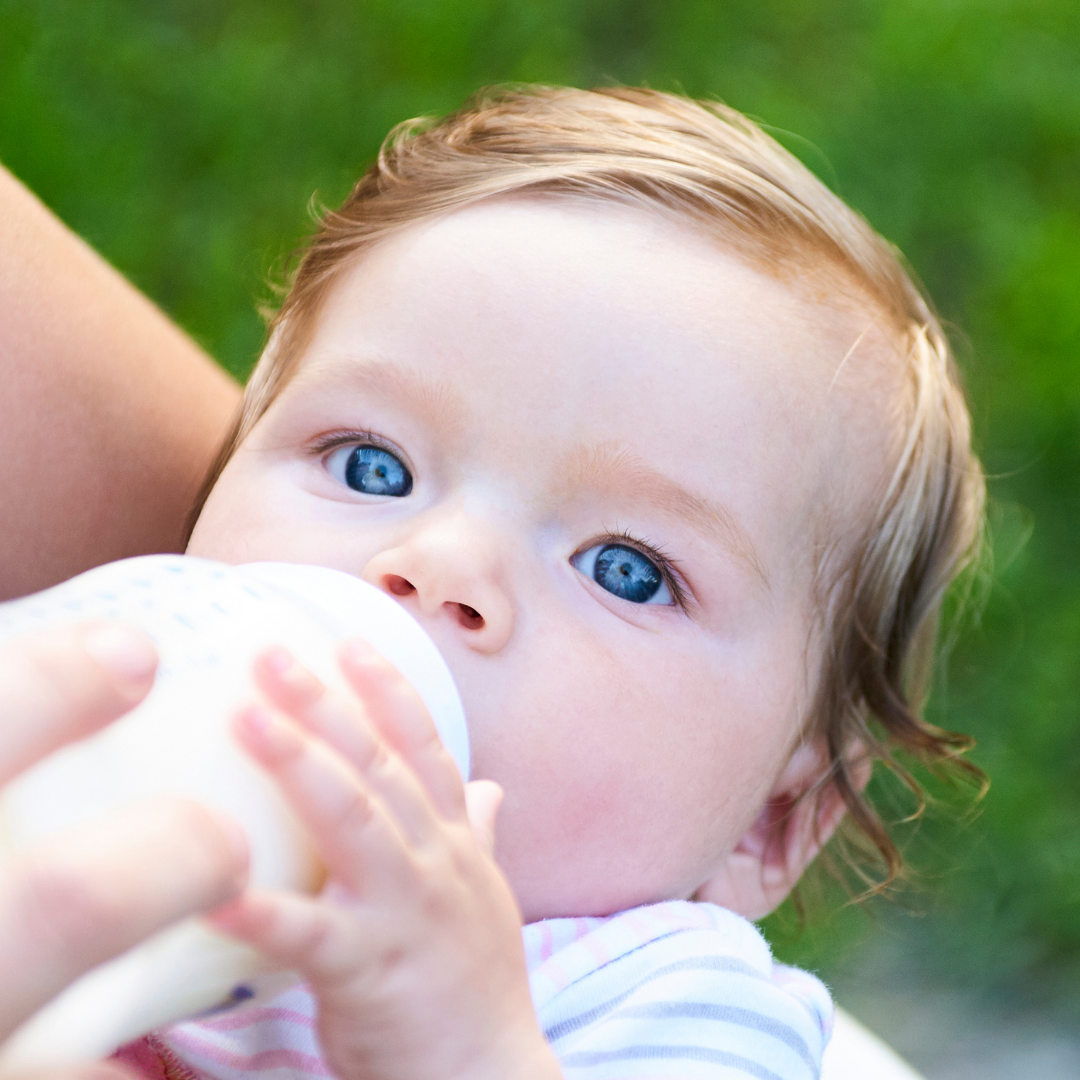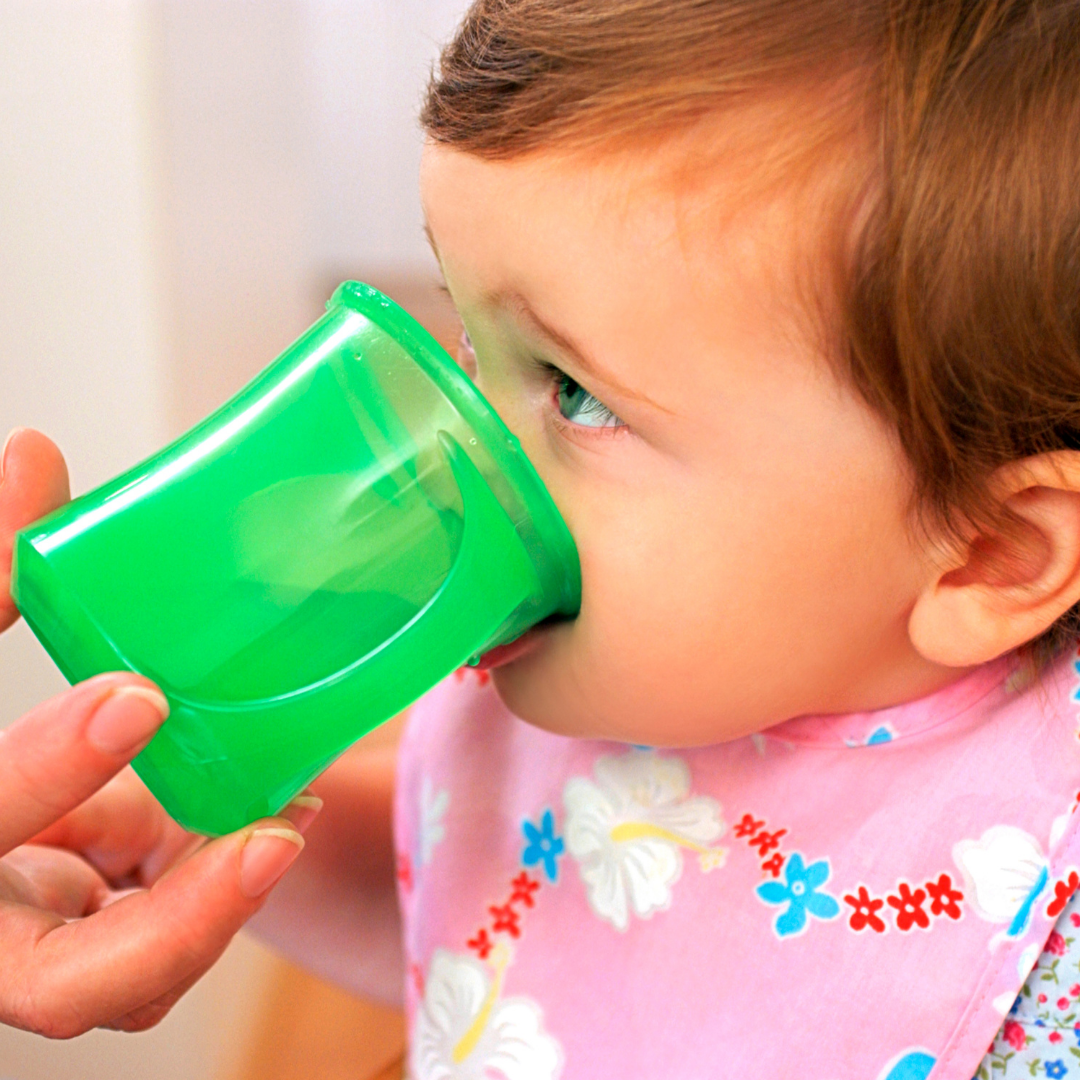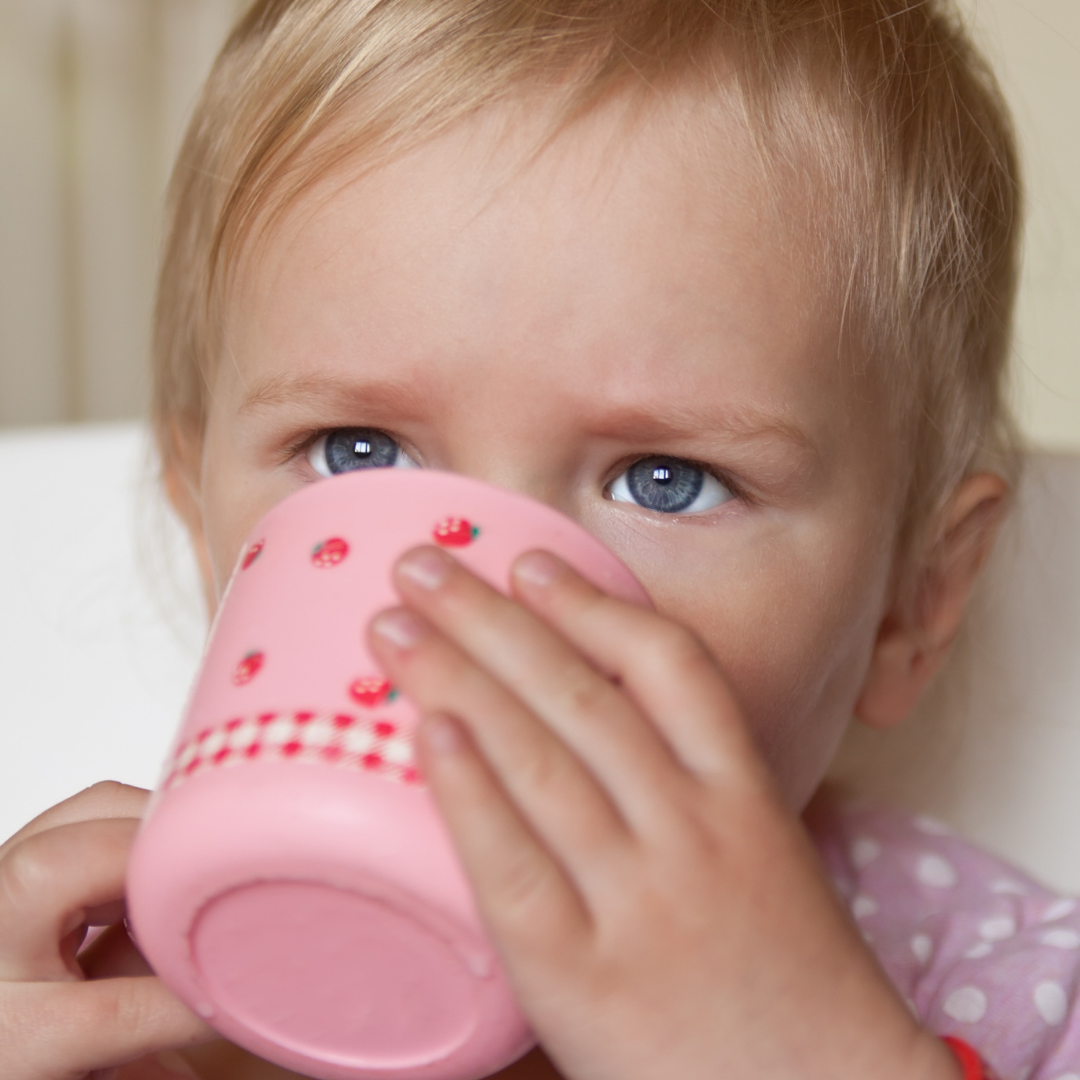When should my child stop having a bottle? (including tips for weaning your child off theirs!)
Written by Claire Burgess, Family Consultant
During the first 12 months of life, the bottle for some babies provides comfort and positive associations. Looking to stop the use of bottles and moving to a cup can often make parents feel sad and question if it is fair on the child to make them give it up because they seem to love it so much. While it can be hard and there can be an attachment, there are good reasons to look at stopping it once your child is over 12 months.
*It is important to note here that there is no need to wean off breastfeeding by 12 months.
When do they need to stop using a bottle?
The NHS recommends that over the age of 12 months your baby should be having their drinks from an open or free flow cup without a valve. When you start the weaning process it is advised that at all mealtimes you offer a cup with the meal rather than a bottle.
Why does my child need to stop having a bottle?
There are several reasons that it is advised that a bottle is not used after the age of one, these are:
It may cause delays in your child’s speech development. Prolonged bottle use can mean that the muscles in the mouth don’t develop in the same way that they do when sipping from a cup which may cause delays with speech development.
It can be bad for their teeth - Fluids flow slowly through a teat and this can mean that the fluid stays in contact with the teeth for longer. It is advised that only milk (breast or formula) or water is put in bottles as anything else can cause tooth decay in children. However, there are also natural sugars in milk which can stay around the teeth for longer when drunk from a bottle and these can start to cause dental caries if prolonged bottle use continues post 12 months. Please note that over the age of 12 months you should only offer drinks of water in the night in order to protect the teeth.
Open cups or cups without a valve make so much mess, why can’t I use valved or anti-spill cups?
Valved or anti-spill cups are designed primarily to avoid liquids leaking from a cup. Having a cup which has valve can mean that the child has to suck harder using a different positioning of their mouth, meaning that the sip and swallow action is different to how this develops when using an open cup. Valved or anti-spill cups also encourage longer drinking times, which can mean greater effort for more limited hydration.
An open cup is the ideal cup to offer at mealtimes from 6 months (*See some options for these at the end of the blog). The way that a baby will drink from an open cup encourages the baby to sip rather than suck, which is the normal and natural way that we all drink. Another other option is a free flow straw cup, without a valve, which will help your child to develop the correct swallow.
In the early days of using an open cup you may find that your baby will spill water down them, but it is only water and the learning process is one which is going to benefit your little one for years to come - it will be worth the practice sessions now! Remain patient, offer small and age-appropriate cups with a small amount of water in it to start with. The more they have the opportunity to practice, the quicker they will learn how to manage the cup.
My child loves their milk from a bottle at night and first thing in the morning, surely it won’t cause a problem?
I would love to say that it isn’t a problem, but there is research (as mentioned above) that suggests prolonged use of a bottle can have significant effects on a child’s teeth and also cause delays in a child’s speech development.
We know that it’s not easy to wean a child off a bottle and for some children it can be a really emotional time, but it can be managed gently and in a way which causes as limited upset as possible.
Here are 4 ways that might help your little one (and you) wean off the bottle:
Replace the bottle with a new cup which your child only has for their milk drinks. This cup might have their favourite character on it or a colour that they like and is a fun and positive addition.
Any new cup should be introduced to your child prior to giving it to them for the first time, if it is familiar and they have seen it prior to bedtime or first thing in the morning this will help with the adjustment.
Encourage cup use at mealtimes and for drinks during the day before getting rid of the bottle at the key times such as bedtime or in the morning. Have several different cups (different colours or designs) which you use at mealtimes so that they have a variety and get used to using different cups.
If your child is still having milk feeds during the day (mid-morning and/or mid-afternoon) start with having these feeds in a cup. Introduce this and give it a few days of adjustment before then looking to change the feed first thing in the morning to a cup. The last one to work on, which can often be the one that people are most worried about, is the bedtime milk. Remember, if you are anxious or worried about the transition it is very likely that your child will pick up on this and will then worry that there is something wrong and refuse the change. If you can be as relaxed about the process as possible this will absolutely help.
*Always remember that after children have had their milk at night they need to brush their teeth.
My child is over 2 years and we haven’t taken the bottle away, what do we do?
Don’t despair it will be fine. If you follow the ideas that are detailed above in a way to reduce bottle use working towards replacing the bottle with a cup altogether it should work. However, once your child has had up to 2 years or more of having a bottle it can mean that taking it away will take a little more time and energy. If you try the above tips and you still have bottles being used, the other technique is to go ‘cold turkey’ by getting rid of the bottles and working through the process. To help with this process consider the following tips:
Bottle fairy – this can be something that you talk to your toddler about, explaining that they are going to give their bottles to the bottle fairy (this is a similar concept used when people are looking to give up dummies!) and they put all their bottles in a bag and then put them on the doorstep, hang them in a tree etc – you can be as creative as you like here! – and then the next day the bottle fairy has left a present for them to say thank you.
Giving their bottles to the baby animals – you can show them videos of baby animals such as lambs who are drinking from bottles and then say that you are going to give the bottles to the baby animals so that they can have their milk. If you have a local farmer it might help to have them in on your plan and you can drop the bottles off there with your child so that they can see the process.
Giving to a new baby who needs them – if you are having another baby avoid this being the baby you are giving the bottles too as this can cause more upset. If you have a friend who is having a baby, then you could suggest giving the bottles to them for the new baby.
Once you make the decision to get rid of the bottles, make sure that they are all gathered up (don’t be tempted to just keep one just in case), prepare your child by explaining what is going to happen, make sure that you introduce the replacement cup in advance and then go for it. Keep consistent when you child asks for their bottle by saying “we don’t have bottles anymore, we gave them to XX.” You can then offer to have a cuddle or, if they are thirsty, offer the cup instead. It might be a difficult few days but it will get easier if you are consistent in your response.
Since stopping the bottle my child isn’t drinking milk, should I be worried?
This is not uncommon as for some children drinking milk out of a cup can feel different, but some also talk about their milk tasting different. Typically, you will see the milk or fluid intake drop in the initial days of getting rid of the bottle but if you do a gradual wean from the bottle to a cup, and your child is drinking from a cup well during the day, it shouldn’t be too long before it gets back to normal. Keep consistent and keep offering the cup, you will get there.
Some children don’t go back to drinking the same amounts of milk as they did when drinking from a bottle. If this is the case then it is important that they are getting their nutrients from their meals, so you might need to increase the dairy content of their meals.
What happens if my child doesn’t like drinking from a cup?
Make it fun! Having different types, shapes, colours of cups can help. You can
introduce a straw but if you do this, it needs to be a short straw so that it doesn’t go too far into the back of the mouth as this changes the sipping action to a sucking action, which is what you want to avoid.
Which cups are good to try?
This is going to be very individual to your child and what they take to but here is a link to some open/non-valved cups.
While you are here have a look at our video guides (webinars) on various topics including behaviour, sleep, play, toilet training and more - click here.
Don’t forget that we offer parent consultations should you need support with anything from sleep to behaviour and so much more! Details of the packages we offer can be found here.
We also have a podcast - ‘Newborn to Teen and Everything in Between’ - listen here.
This blog contains affiliate links.



